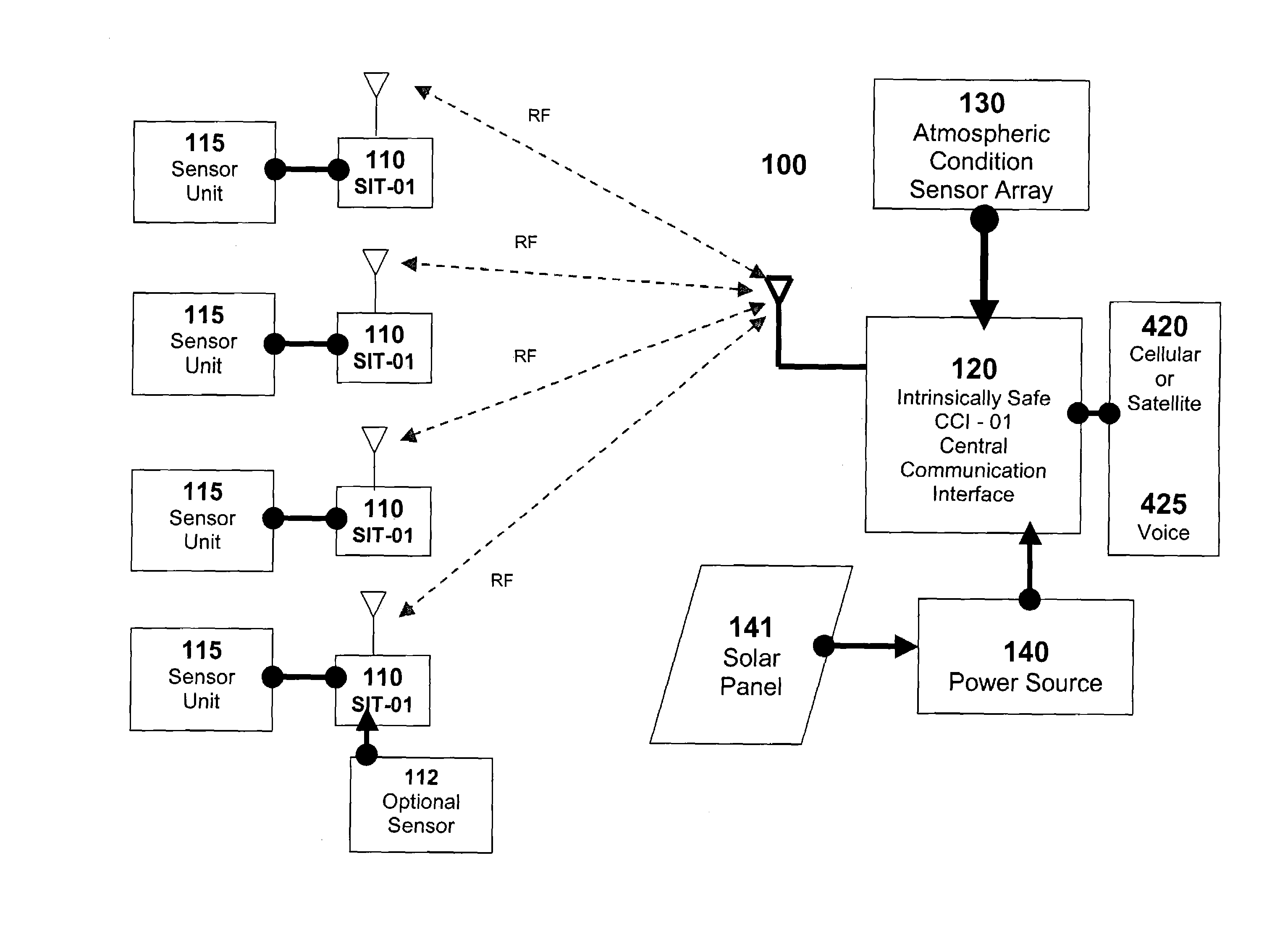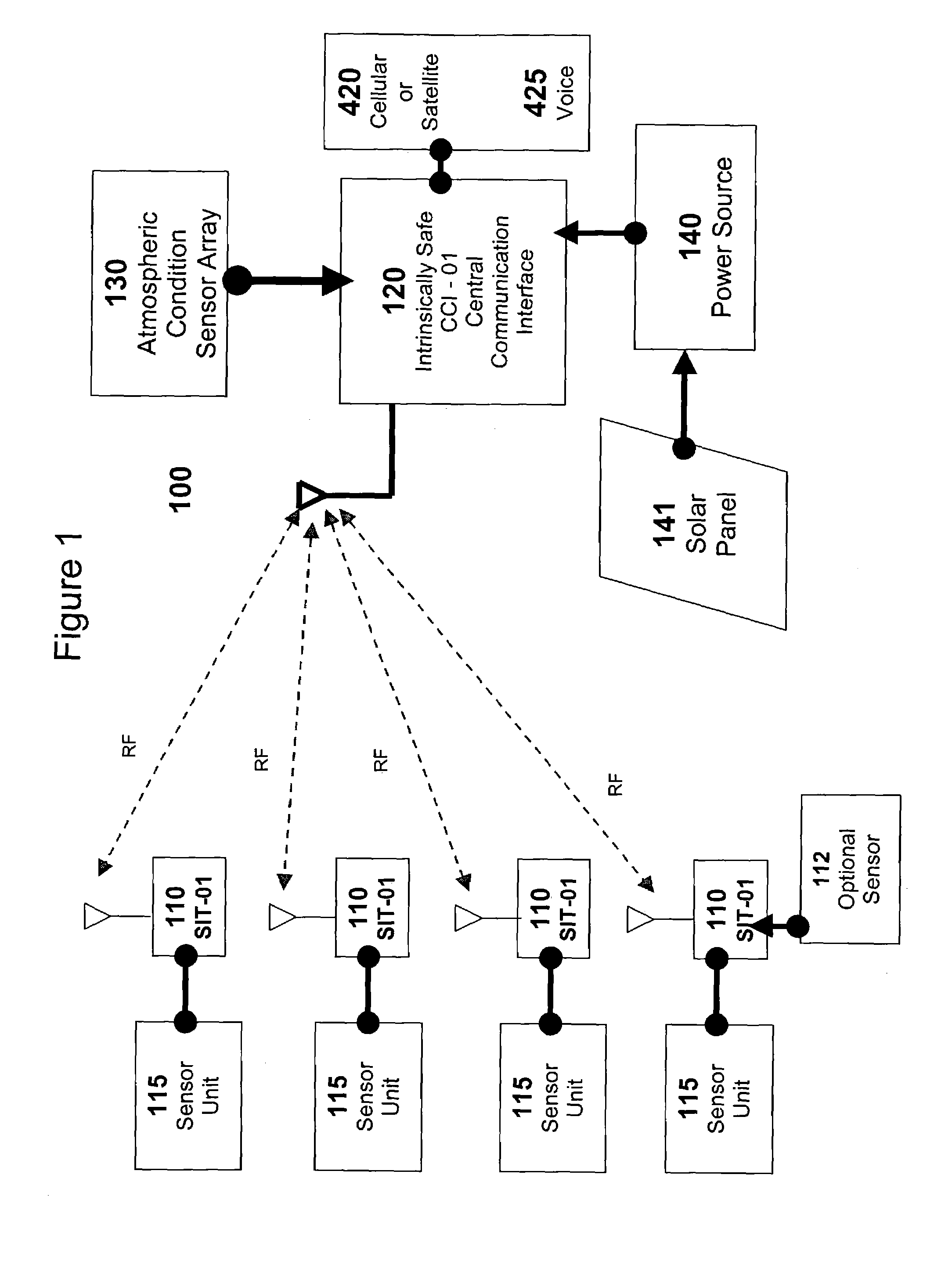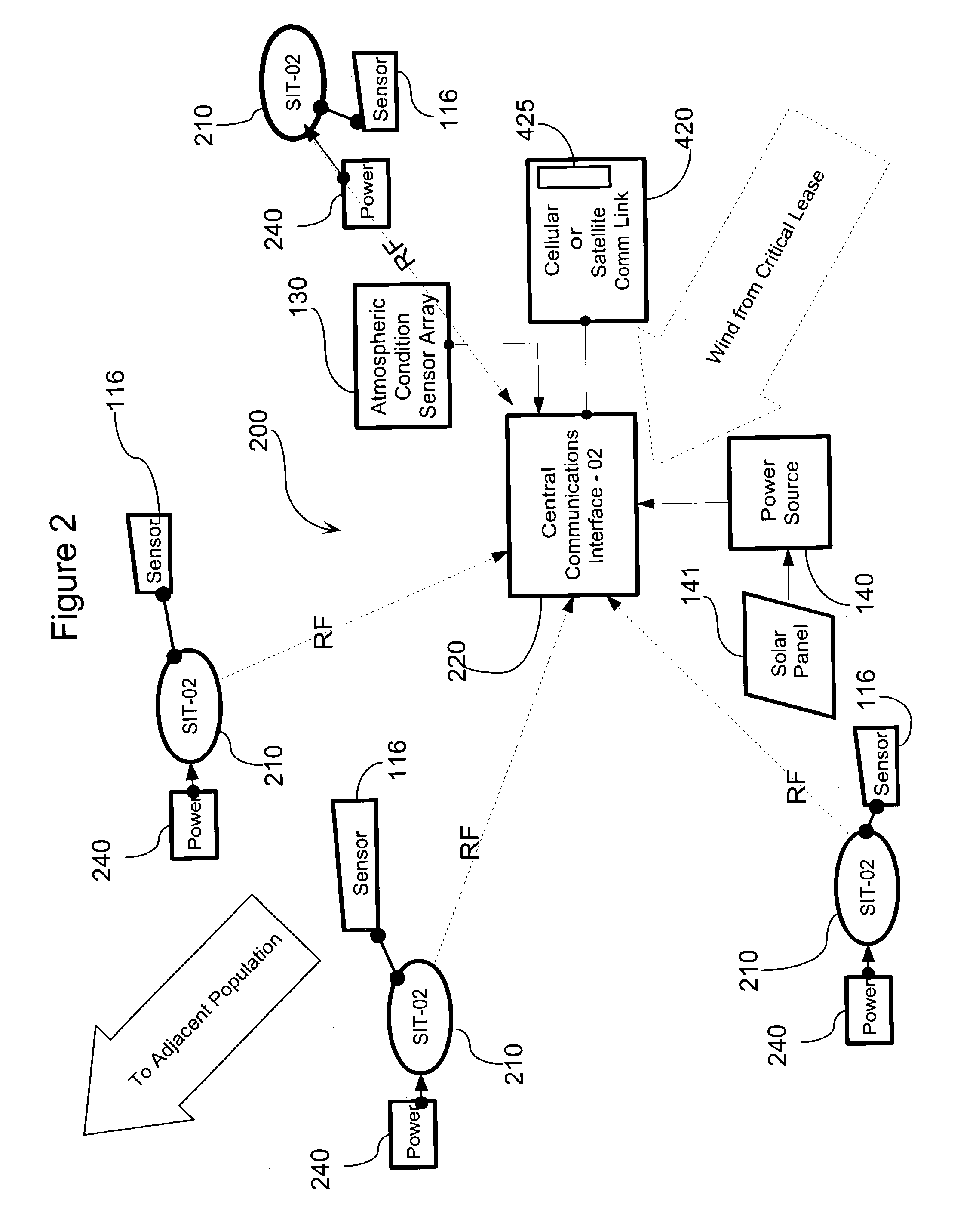Apparatus system and method for gas well site monitoring
a gas well and apparatus technology, applied in the field of gas well safety, can solve the problems of inability to meet the needs of users, and inability to meet the needs of users, and achieve the effect of simple and affordable, enhanced flexibility and convenience of user location
- Summary
- Abstract
- Description
- Claims
- Application Information
AI Technical Summary
Benefits of technology
Problems solved by technology
Method used
Image
Examples
Embodiment Construction
[0040]Referring to FIG. 1 there is illustrated an electronic system including an intrinsically safe Central Communication Interface (“CCI”), multi-mode long-distance communications capability, and a plurality of Sensor Interface Transceivers (“SIT”), together denoted generally as 100, the system 100 being for placement on-site at a critical lease (i.e. hazardous) well site. The CCI element has two configurations being CCI-01 (On Lease) 120 and CCI-02 (Downwind) 220 as set out in FIG. 2. Similarly the SIT element has two configurations being SIT-01 110 and SIT-02 210 as set out in FIG. 2. It is contemplated that the use of a configurable base design for each of the CCI and SIT will lead to manufacturing and production advantages in that the elements of the system of the present invention will be easily substitutable to meet different inventory and operational needs quickly, but affordably.
[0041]According to one embodiment, system 100 comprises at least one SIT 110, CCI 120, atmospher...
PUM
| Property | Measurement | Unit |
|---|---|---|
| frequency | aaaaa | aaaaa |
| concentration | aaaaa | aaaaa |
| signal strength | aaaaa | aaaaa |
Abstract
Description
Claims
Application Information
 Login to View More
Login to View More - R&D
- Intellectual Property
- Life Sciences
- Materials
- Tech Scout
- Unparalleled Data Quality
- Higher Quality Content
- 60% Fewer Hallucinations
Browse by: Latest US Patents, China's latest patents, Technical Efficacy Thesaurus, Application Domain, Technology Topic, Popular Technical Reports.
© 2025 PatSnap. All rights reserved.Legal|Privacy policy|Modern Slavery Act Transparency Statement|Sitemap|About US| Contact US: help@patsnap.com



